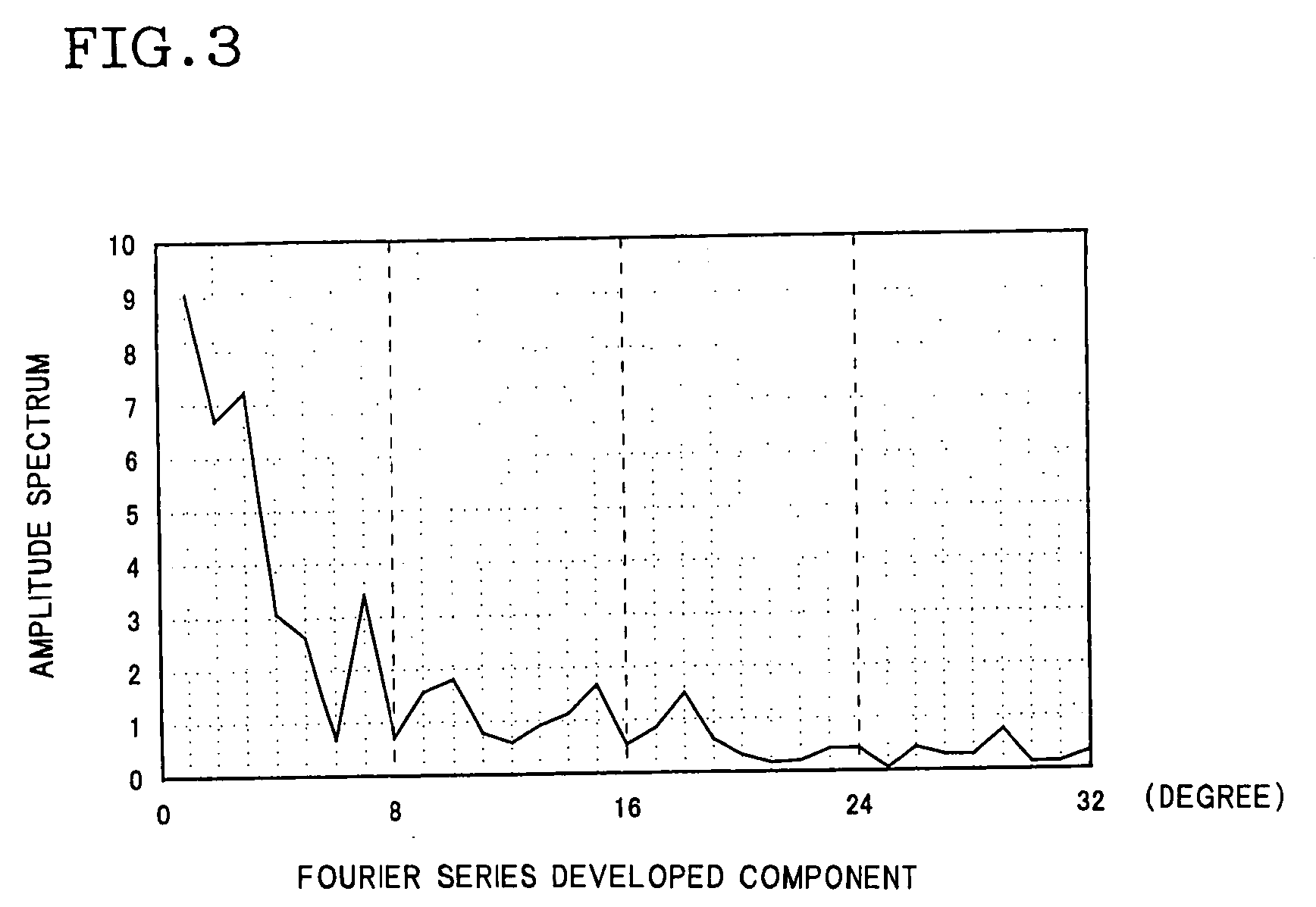Porous honeycomb structure
a honeycomb structure and porous technology, applied in the field can solve the problems of increasing pressure loss, demanding the lengthening of trapping time, and promoting degradation of porous honeycomb structure, so as to achieve effective use of catalysts, improve purification performance, and effectively raise the effect of soot trapping efficiency
- Summary
- Abstract
- Description
- Claims
- Application Information
AI Technical Summary
Benefits of technology
Problems solved by technology
Method used
Image
Examples
examples 2 to 10
, AND COMPARATIVE EXAMPLES 1 TO 8
[0079] Honeycomb structures (honeycomb filters) were obtained in the same manner as in Example 1 except that cordierite raw materials and pore formers having compositions shown in Tables 1 and 2 were used in Example 1.
[0080] (Evaluation Results)
[0081] In each of honeycomb structures of Examples 1 to 10 in which 2 to 3.5 parts by mass of a foamed foaming resin was added as a pore former as shown in Tables 2, 3, an average pore diameter of partition walls was 16.0 to 34.6 μm, and a porosity was 55.5 to 72.0%. In any example, a pore distribution of the obtained honeycomb structure satisfied conditions of Condition Formulas (1) and (3) as shown in FIGS. 4 and 5. Even in the honeycomb structures of Examples 1 and 7 in which comparatively coarse talc and silica raw materials were used, the conditions of these relation formulas were satisfied, and this was supposedly because the foamed foaming resin expanded in the partition walls immediately after the fo...
example 11
[0090] A honeycomb structure (catalyst carrier) having a size: φ229.0 mm×L 152.0 mm, a partition wall thickness: 300 μm, and a cell density: 46.5 cells / cm2 was manufactured in the same manner as in Example 1 except that a step of plugging through-holes was not performed in Example 1.
PUM
| Property | Measurement | Unit |
|---|---|---|
| pore diameter | aaaaa | aaaaa |
| porosity | aaaaa | aaaaa |
| length | aaaaa | aaaaa |
Abstract
Description
Claims
Application Information
 Login to View More
Login to View More - R&D
- Intellectual Property
- Life Sciences
- Materials
- Tech Scout
- Unparalleled Data Quality
- Higher Quality Content
- 60% Fewer Hallucinations
Browse by: Latest US Patents, China's latest patents, Technical Efficacy Thesaurus, Application Domain, Technology Topic, Popular Technical Reports.
© 2025 PatSnap. All rights reserved.Legal|Privacy policy|Modern Slavery Act Transparency Statement|Sitemap|About US| Contact US: help@patsnap.com



